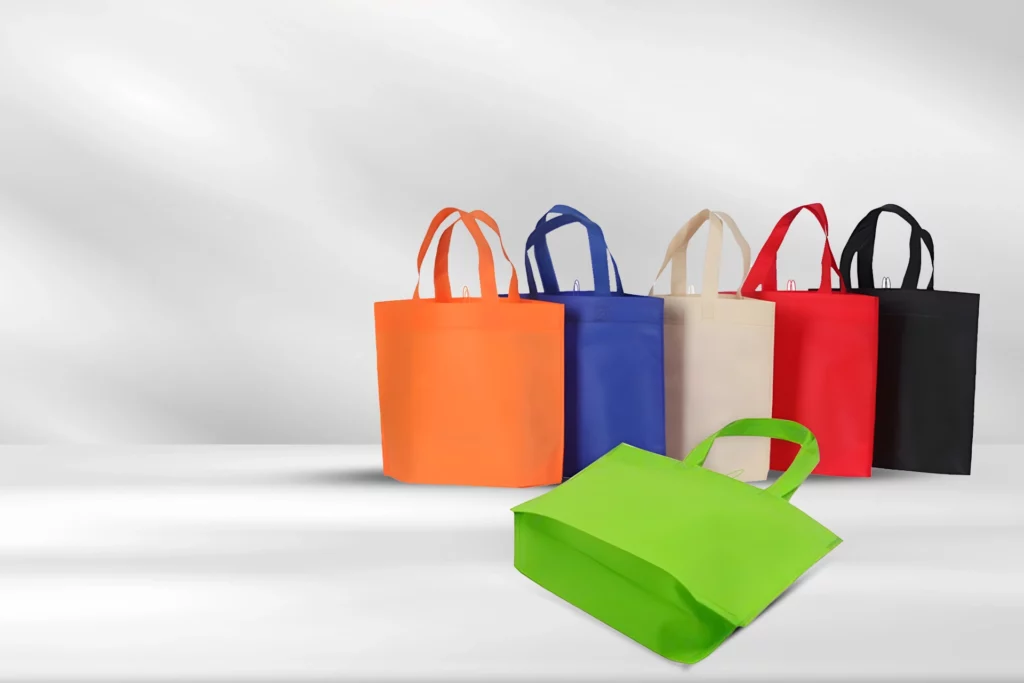Introduction
As environmental awareness continues to grow, businesses and consumers alike are making the switch from single-use plastic to more sustainable packaging options. Among the most popular alternatives are woven and non-woven bags. Though both are often marketed as eco-friendly, they are made differently, serve different purposes, and have distinct advantages. So, how do you choose the right one?
Let’s take a closer look at how woven and non-woven bags compare—and which one might be better for your needs.
What Are Woven Bags?
Woven bags are made from woven polypropylene (PP) fibers. These fibers are first spun into threads and then woven together using a loom, creating a durable, flexible, and strong material. Because of this interlocking weave structure, woven bags can withstand heavy loads, rough handling, and exposure to various elements. They’re widely used in agriculture, construction, packaging of goods like rice, grains, fertilizers, cement, and even pet food.
Woven bags can also be laminated with BOPP (Biaxially Oriented Polypropylene) film to enhance water resistance, printability, and durability, making them ideal for industries that require both branding and functionality.
What Are Non-Woven Bags?

Non-woven bags, on the other hand, are made using polypropylene fibers that are bonded together using heat, chemicals, or pressure—but without weaving or knitting the fibers. The result is a fabric-like material that is softer and more flexible than woven fabric but not as strong. Non-woven bags are most commonly seen in shopping bags, promotional totes, and lightweight retail packaging.
They are typically cheaper to produce, especially in bulk, and can be printed with brand logos or messages, making them popular for marketing campaigns, exhibitions, and giveaways.
Key Differences Between Woven and Non-Woven Bags
When it comes to choosing the right type of reusable bag, understanding the differences between woven and non-woven materials is essential. While both are made from polypropylene and often marketed as eco-friendly alternatives to single-use plastic, they vary significantly in strength, structure, appearance, and application. In this section, we’ll explore the key differences between woven and non-woven bags to help you decide which option best suits your packaging or branding needs.
1. Material Strength and Durability
Woven bags are far more durable due to their structured weaving, making them suitable for carrying heavy items or bulk products. Non-woven bags, while sturdy enough for everyday use, are better suited for light to moderate loads.
2. Production Process
Woven bags go through a multi-step process involving extrusion, weaving, and sometimes lamination. Non-woven bags are simpler and faster to produce, often through a one-step process that’s less resource-intensive.
3. Water Resistance
Woven bags—especially those laminated with BOPP—are generally more water-resistant than non-woven bags. This makes them ideal for outdoor or industrial use where moisture exposure is a concern.
4. Cost
Non-woven bags are typically less expensive to manufacture and are a go-to choice for brands looking to offer eco-friendly options on a tight budget. Woven bags, while costlier, offer better value over time due to their reusability and strength.
5. Print Quality
Both types can be printed on, but BOPP-laminated woven bags offer sharper, more vibrant graphics, which is a major advantage for retail packaging and branding. Non-woven bags can be printed with simpler designs, which may fade more quickly with use.
6. Eco-Friendliness
Both woven and non-woven PP bags are recyclable and reusable, making them better alternatives to single-use plastic. However, their actual environmental impact depends on how often they are reused and whether they are properly recycled after use.
Which Is Better?
The answer depends entirely on your needs, budget, and intended use:
- If you’re in an industry that demands heavy-duty packaging, such as agriculture, animal feed, or construction, woven bags are the clear winner due to their strength and durability.
- If you’re looking for a cost-effective promotional product or a lightweight shopping bag, non-woven bags may be the better option.
- For businesses concerned with branding and visual appeal, especially in retail, BOPP laminated woven bags offer the best of both worlds: strength and striking design.
Also Read: Different Types of Woven Bags: A Complete Guide
Conclusion
Choosing between woven and non-woven bags isn’t just about material—it’s about matching the right bag to the right job. Woven bags are strong, reusable, and ideal for heavy-duty or long-term use, while non-woven bags are lightweight, economical, and perfect for quick marketing or retail giveaways.
Whichever you choose, both options represent a step forward in reducing plastic waste and moving toward more sustainable packaging solutions. And that’s a win for both your brand and the planet
